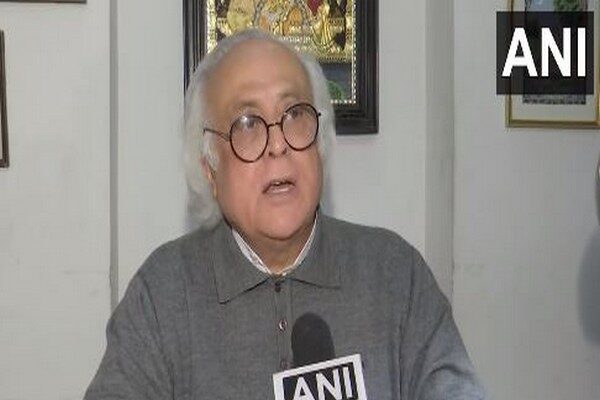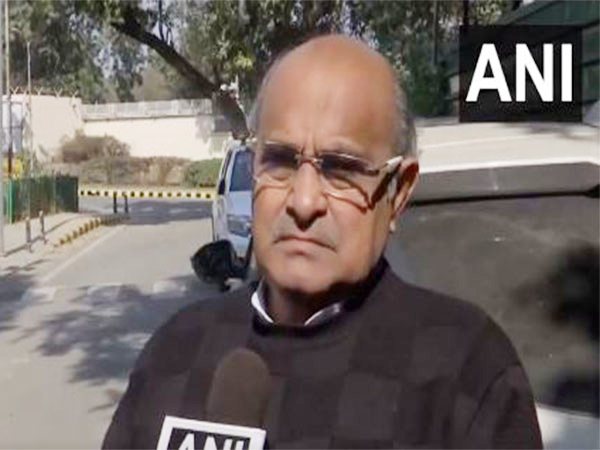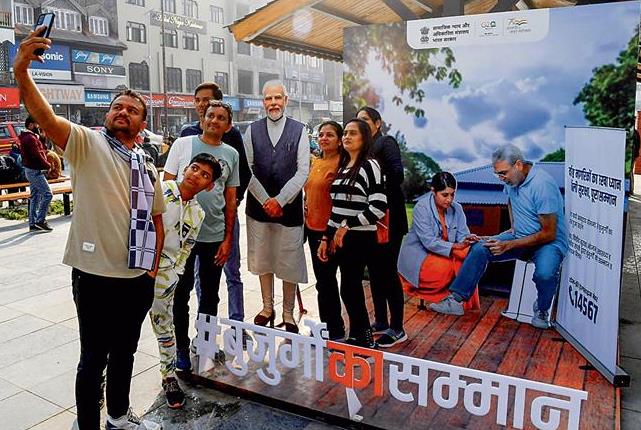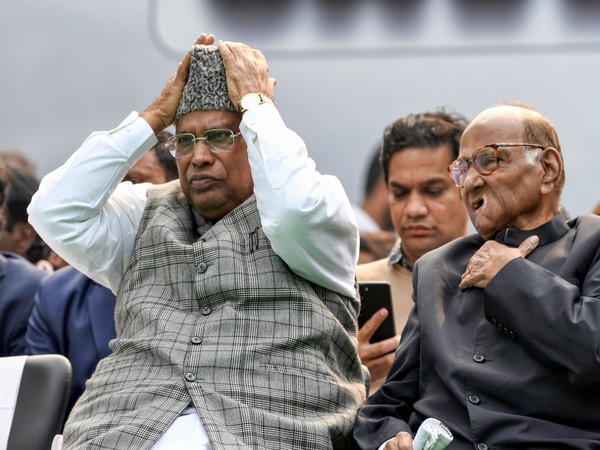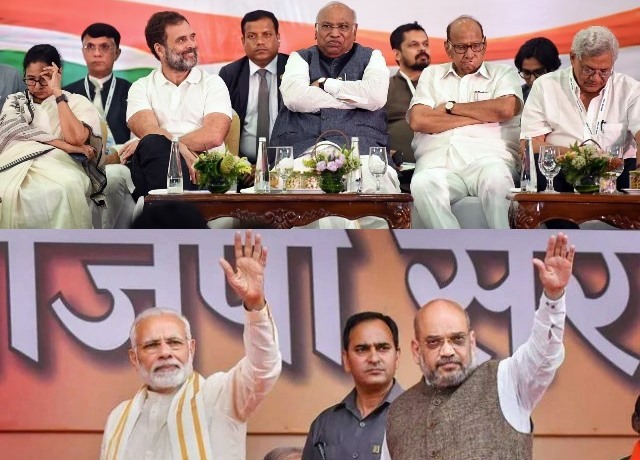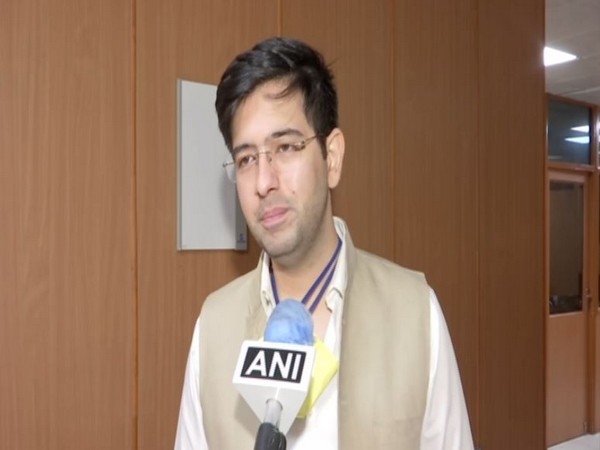“It’s the semi-finals,” says a journalist friend in Delhi. We were chatting on the phone about next month’s assembly elections in which five Indian states, Madhya Pradesh, Rajasthan, Chhattisgarh, Telangana, and Mizoram will go to the polls. The sports reference relates to the big finals, next year’s parliamentary elections, due in May and in which more than 900 million Indians will cast their votes to elect a new government for India and in which the Narendra Modi-led regime in power would be keen to win a third term.
Many in India believe Modi and his party, the Bharatiya Janata Party (BJP), would likely sweep the parliamentary polls again. Still, much could depend on how the next round of assembly elections pan out.
The BJP, on its own, or as a dominant partner, or in alliance with other parties, rules in 15 states and one Union Territory (India has 28 states and eight UTs). And while Modi and his party have for long pursued a mission of trying to win in as many states in the country, and for a while it seemed like that ambition would come true, in recent assembly elections, they have not fared exceedingly well. Notably, in May this year, when elections were held in the southern state of Karnataka, it was the Congress that won it with a landslide victory by getting 135 of the 224 seats and recording its biggest win since 1989.
In fact, the outcomes of assembly elections that were held in the past two years have been mixed for the BJP. To be sure, it did win some of these. In Goa, in May 2022, it retained power by winning 27 of the 40 seats; in the trouble-torn northeastern state of Manipur, in March last year it won a second term; in Uttarakhand too it became the first party to be re-elected when the state elections were held in March 2022; in the most populous state (and one of the most electorally important ones) of Uttar Pradesh, it retained power for the second time led by chief minister Yogi Adityanath who is perceived as a hardline Hindu nationalist but has also proved to be popular and successful; and in Gujarat, which is Modi’s home state, the BJP won again and has now been in power for 28 years.
Besides Karnataka, there have been other setbacks as well for the BJP. In Punjab last year, for instance, it was the Aam Aadmi Party, which swept the polls defeating all three, BJP, Congress, and the Akali Dal. In Himachal Pradesh, in November 2022, it was ousted by the Congress, which came back to power after losing its majority in 2017. Also, in the southern states, with the exception of Karnataka, where the BJP has managed to form governments in the past, the party’s spread has been insignificant.
In India, elections, besides being held on a humongous scale, are complex and the outcomes depend on myriad factors. Incumbent governments often face the wrath of disappointed voters; castes and communal conflicts play a decisive role; and, particularly in the states, local issues dominate. Indian voters often vote differently in state elections from what they do in the parliamentary elections. The Modi-led regime, for instance, won 282 of the 543 parliamentary seats in 2014 when it came to power, and did even better in 2019 when it got reelected by winning 303 seats.
My friend, the Delhi journalist who calls next month’s state elections the semi-finals, reminded me about how Modi’s draw among Indian voters has not shown signs of weakening. His impressive personality (of being a strong leader who eclipses all of his opponents) and his government’s achievements appeal to people and these factors could decide who wins the finals when parliamentary elections are held next May. Yet, what happens in the five states that go to the polls next month could also have a bearing on whom voters would choose then. So, what could be the likely outcomes of these five state elections?
In the large central Indian state of Madhya Pradesh, it is the BJP that now rules. Led by chief minister Shivraj Singh Chouhan, the BJP has been in power there for four terms. However, things are not simple for it. The last assembly elections in the state were actually won by the Congress but that government collapsed in 2020 after 22 Congress legislators who were loyal to the erstwhile Congress leader, Jyotiraditya Scindia, resigned when he jumped ship and joined the BJP. This reduced the strength of the Congress from 114 to 92 in the 230-member assembly, while the BJP had 107 MLAs. The BJP then staked claim to form the government with the support of other parties. So its tenure has been tenuous.
Chouhan could face significant anti-incumbency headwinds in next month’s elections. Also, under Kamal Nath, a veteran party leader, now 76, the Congress has been consolidating its base in the state and many believe the party could pose a big challenge to the BJP. And although Chouhan is popular and influential in the state and is known for his welfare schemes and development initiatives, especially for farmers and backward classes, his party’s central leadership in Delhi often doesn’t see eye to eye with him. These are factors that could jeopardise a BJP victory in the state.
In Rajasthan, the situation is equally complex. The state’s Congress chief minister is Ashok Gehlot who has been in office since late 2018, after leading his party to victory in the state election. In the early part of his regime, his then deputy chief minister, the Congress leader Sachin Pilot, and Gehlot had a falling out with the former rebelling over issues of power-sharing and governance. Pilot was removed from his post and the party’s future in the state was under a shadow. However, since then the two have reconciled. On the other hand, it is the BJP in Rajasthan that is in an unstable state because the party faces several challenges and uncertainties ahead of the 2023 assembly elections.
One of the factors is the role played by BJP leader Vasundhara Raje, a former chief minister and the most prominent leader of the BJP in Rajasthan. She has been sidelined by her party’s high command and has not been projected as the chief ministerial candidate. She has also been in conflict with some of the central leaders, such as Union Minister Gajendra Singh Shekhawat, who is seen as a rival to her in the state. Many of her supporters have been denied party tickets, and she has not been actively involved in the election campaign so far. This could queer the pitch for the party in the coming elections.
There is also an anti-incumbency factor against the BJP. Although it is not in power in the state now, it has ruled Rajasthan for 28 years since 1995 before the current Congress came to power in 2018 and it has faced criticism for its poor management of the Covid-19 pandemic, rising unemployment, high inflation, low economic growth and rampant crime. The party has also failed to address the issues of farmers, backward classes, women and minorities. That and the fact that Raje could divide the BJP vote could be factors that could go against the party and favour the Congress.
In Telangana, a state that was formed in 2014 after a long and intense movement for a separate statehood from Andhra Pradesh, neither the BJP nor the Congress have any significant possibility of gaining ground. The ruling regional party, Telangana Rashtra Samithi (TRS), has dissolved the assembly and called for early polls, hoping to cash in on its popularity and avoid any anti-incumbency. The TRS is confident of retaining power on the basis of its welfare schemes and development initiatives, especially for farmers and backward classes. The main opposition is the Congress-led alliance, which includes the Telugu Desam Party (TDP), the Communist Party of India (CPI) and the Telangana Jana Samithi (TJS). The alliance is challenging the TRS on the issues of unemployment, corruption and family rule. The BJP is also trying to increase its presence in the state, where it won only five seats in 2014. But some opinion polls have given a comfortable majority to the TRS, while others have suggested a tight race.
In the northeastern state of Mizoram the Mizo National Front (MNF), which is a regional party that follows the Mizo nationalist ideology, is in power with the party’s leader Zoramthanga as the chief minister. The MNF won 26 seats out of 40 in 2018. While the Congress has a bigger presence than the BJP in the state, recent inter-tribe violence and conflicts in another northeastern state, Manipur, could influence which way Mizo voters would swing. There could be mistrust and lack of faith in central parties such as the Congress and BJP and that could go in favour of regional parties such as the MNF.
In Chhattisgarh, another central Indian state, the Congress came to power in 2018, after winning 68 out of 90 seats by ousting the BJP, which got only 15 seats. The current chief minister of Chhattisgarh, Bhupesh Baghel, is expected to lead his party to another victory in the state over the BJP.
So, let us suppose the BJP fares badly in next month’s elections. Say, it loses in Madhya Pradesh, Rajasthan, and Chattisgarh, and fails to make any significant inroads in Telangana and Mizoram, what would that mean for Modi when he braces up for the parliamentary elections in May? Would the semi-finals have a bearing on the finals?
There are many who go by the logic that Indians vote differently in their state elections where local issues dominate and differently at the central level where it is Modi’s personality, image, and the confidence he exudes that will matter (in most opinion polls he emerges as by far the strongest Indian political leader).
The other thing is what has become known as the TINA (or There is No Alternative) factor. Coined in the 19th century by the classical liberal thinker and Darwinist Herbert Spencer, the phrase is associated with the policies and persona of the Conservative British Prime Minister Margaret Thatcher. Thatcher used this phrase in a speech to the Conservative Women’s Conference on May 21, 1980, where she appealed to the notion saying, “We have to get our production and our earnings into balance. There’s no easy popularity in what we are proposing but it is fundamentally sound. Yet I believe people accept there’s no real alternative.”
While the phrase is often used in political and financial contexts to justify decisions, in the Indian political context it could be interpreted as there being no alternative to Modi when it comes to the parliamentary elections.
The Modi government has been in power for nine years. During this time, it has introduced some long-awaited reforms in the country. Some of its achievements include the Goods and Services Tax (GST), the Insolvency and Bankruptcy Code (IBC), and the Swachh Bharat campaign. The Indian economy has witnessed an impressive rise, and India is now the fifth largest economy in terms of GDP. However, the Modi government faces a plethora of challenges such as unemployment, inequality, farmer distress, and rising inflation. There has also been an increase in communal tensions, especially between the majority comprising Hindus (80% of the population) and Muslims (a bit less than 15%).
Yet, there is no obvious alternative to him. The alliance of 26 Opposition parties, fashioned under the acronym, I.N.D.I.A., which also includes the Congress, intends to fight the BJP in the parliamentary elections as a united front but is itself riddled with rivalries, differences, and lack of consensus. More importantly, it does not have a personality that it could project to take on Modi. Will what happens in the semi-finals affect what happens in the finals? Probably not.
